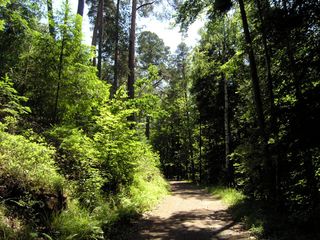Plants Don't Produce Greenhouse Gas, New Study Finds

Plants are not a significant source of methane, a potent greenhouse gas, according to new research that casts doubt on the results of an earlier study.
Like carbon dioxide, the most abundant greenhouse gas in the atmosphere, methane acts like a blanket to trap the heat that Earth radiates away.
The biggest recognized sources of methane are emissions from wetlands and rice paddies, where bacteria in the mud break down organic matter in the absence of oxygen to produce methane, and the belching of cows and other animals.
Two studies, different results
Plants were never suspected to be a source of methane, until a 2006 study in the journal Nature measured methane emissions from several types of plants, including maize, basil and wheat. The atmospheric chemists who conducted the study concluded that plants accounted for about 10 to 30 percent of the methane annually emitted into the atmosphere.
This result meant that climate models would have to be re-factored to include this methane source; it also provided a potential explanation for the odd methane plumes detected over tropical rainforests. If linked to deforestation, the finding could also explain why methane levels had recently stopped rising.
The new study, published on April 27 in the online edition of the journal New Phytologist, involved plant biologists who also grew maize, basil and wheat along with other grew plants in carbon dioxide that contained a heavier form of carbon, carbon-13, instead of the more abundant carbon-12—this “labeling” meant that any methane emitted by plants would contain carbon-13 and so would be easier to detect.
Sign up for the Live Science daily newsletter now
Get the world’s most fascinating discoveries delivered straight to your inbox.
Both groups tried to rule out any emission from bacteria that live in oxygen-free pockets in the soil—in the new study, the biologists grew their plants hydroponically, or without soil; the chemists in the first study also tried to detect methane from the soil itself and found none.
The biologists who authored the newer study found no significant emissions of methane from the plants they grew, even when they looked at a large amount of plants.
An open debate
The 2006 study was unable to pinpoint the mechanism plants might use to produce methane, and there is no known biological method that could do this, said lead author of the new study, Tom Dueck of Plant Research International in the The Netherlands, in a telephone interview.
“There’s no physical mechanism or way for plants to produce methane,” he said. “We can’t think of any way they could.”
Dueck faults the methods used by the chemists in the first study, saying that they could have essentially created a false methane emission reading.
The two groups plan to collaborate and re-run experiments to see why they got such different results and determine whether or not plants emit methane. But the set-ups for both studies were so different that the cause of the opposing results “could be anything,” said co-author of the Nature study Thomas Röckmann of Utrecht University in The Netherlands.
“I really want to find out what this is,” Röckmann told LiveScience, encouraging more scientists to reproduce their experiment.
Röckmann stresses that even if plants are found to be a significant source of methane, they are not responsible for global warming, because their contributions to greenhouse gas levels would have been around long before the recent rise in average global temperatures.
- Video: Goldilocks and the Greenhouse
- Top 10 Surprising Results of Global Warming
- Timeline: The Frightening Future of Earth

Andrea Thompson is an associate editor at Scientific American, where she covers sustainability, energy and the environment. Prior to that, she was a senior writer covering climate science at Climate Central and a reporter and editor at Live Science, where she primarily covered Earth science and the environment. She holds a graduate degree in science health and environmental reporting from New York University, as well as a bachelor of science and and masters of science in atmospheric chemistry from the Georgia Institute of Technology.